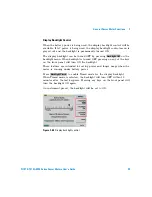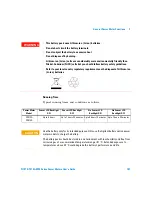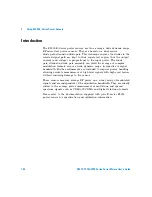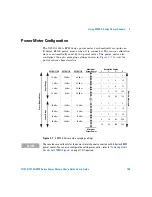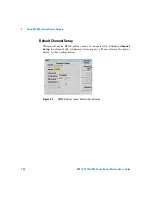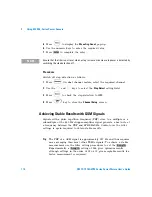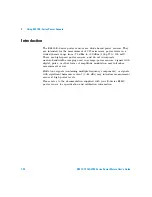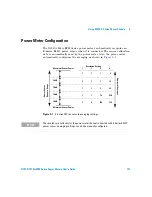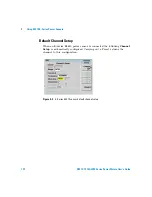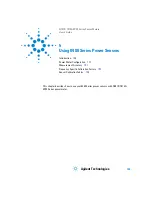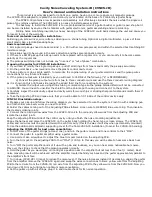
Using E9300 E-Series Power Sensors
3
N1913/1914A EPM Series Power Meters User’s Guide User’s Guide
113
Measuring TDMA Signals
Power Meter and Sensor Operation
The voltages generated by the diode detectors in the power sensor can be
very small. Gain and signal conditioning are required to allow accurate
measurement. This is achieved using a 400 Hz square wave output from
the power meter to drive a chopper- amplifier in the power sensor. Digital
Signal Processing (DSP) of the generated square wave is used by the
power meter to recover the power sensor output and accurately calculate
the power level.
The chopper- amplifier technique provides noise immunity and allows large
physical distances between power sensor and power meter. Additional
averaging helps reduce noise susceptibility.
Achieving Stable Results with TDMA Signals
The averaging settings in the power meter are designed to reduce noise
when measuring continuous wave (CW) signals. Initial measurement of a
pulsed signal may appear unstable with jitter on the less significant
displayed digits. With pulsed signals the averaging period must be
increased to allow measurement over many cycles of the pulsed signal.
Procedure
Set the averaging as follows:
1
Press
.
On dual channel meters, select the required channel.
2
Use the
and
keys to select the
Filter
setting field.
3
Press
and use the
and
keys to step through the
available settings. Select
MAN
.
4
Use the
key to select the
Meas Avg:
value field.

